Regent Road and Street, with pavements on either side of the carriageway running east to west from Water Street to the Botanic Gardens’ entrance divides the capital city of Georgetown into northern and southern halves. Taken together with Camp Street, running north to south diagonally across, the city is divided into four quarters. The name Regent, along with Crown, Princes, King, and Charlotte Streets, reflect our subjugation to the English monarchial system, as the city evolved from Stabroek to Geoge-Town in 1812. Wellington and Waterloo Streets remind us that the victory over Napoleon Bonaparte in 1815 may have saved us from speaking French today.
The City Hall designed by Father Ignatius Scoles, a trained architect, and opened on July 1, 1889, is acclaimed to be the most handsome building in the capital. A timber Victorian exuberance, it is resplendent with Gothic revival architecture. The superior acoustics of the main Concert Hall made it the venue of major concerts and recitals before the National Cultural Centre opened in 1973 for Carifesta. The Police Male Voice Choir held its debut concert there, while many of the visiting international and Guyanese artistes including Ray Luck, performed there. Decorated with thousands of bulbs like a Disney fairy castle for the coronation of Queen Elizabeth II in 1953, the City Council is cash-strapped today, in serious arrears with their electricity bills.
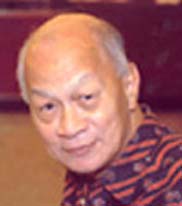
Other historical sites include the former St Barnabas Church, built in 1884 as a place of worship for the residents of Bourda, with the steeple and Corpus Christi Chapel added in 1926. Just recently this concrete edifice was sold to Alfro Alphonso of Pomeroon Oil Mill, Inc on account of depredations by vagrants in the market area, and the lack of support locally to preserve this heritage building. What a shame!
The Bourda Market opened in 1880, and the cemetery opposite is a memorial to Joseph Bourda, who once owned Plantation Vlissengen where Bourda ward is sited. Georgetown must be the only town in the world where there is no rest for the dead. Endless traffic noise, plus mobile music vendors continuously awaken the dead – longing for peace in their final resting place, neglected and overgrown.
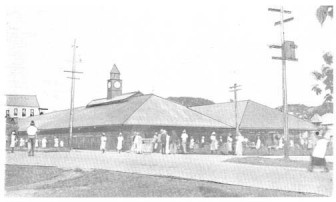
St Barnabas Football Club founded in 1921, played at the Bourda Green (now Bourda Market extension), and provided strong challenges to GFC, Victoria, Gunners, Artillery, and Charlton for the annual FA trophy and Peppiette Cup.
In the early twentienth century the Tajmahal Boarding House at the High Street corner, south of Central Garage was popular, as was the Regent Hotel, at Hincks Street. The Savoy Hotel Fire on May 17, 1947 destroyed the block opposite and was replaced by the Bank of Baroda, with the Torginol Paint outlet at Hincks Street. The American Life Insurance Building was built obliquely opposite subsequently.
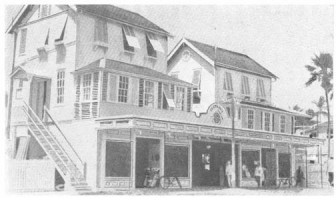
On the early afternoon of February 16, 1962, a catastrophic fire started at Bookers Cycle and Sports Department in Water St, crossed over the road to destroy Bookers Shipping Dock, their shipping head office, and Amalgamated Groceries, to the southern Robb Street end. Fanned by a strong wind, the fire proceeded south to destroy John Fernandes Shipping, C A Phillips Ltd, J P Santos, etc. Only the concrete structure of Brodie and Rainer Ltd, saved Stabroek Market by
dusk time, amidst wanton looting and rioting in the entire commercial city. A British regiment was rushed from Jamaica to restore order by early evening.
Other fires on Regent Street included the interior of Bourda Market on February, 13, 1971, plus a two-flat business at Light Street on May 12, 1979. Recently in the last two years, fires west of Albert Street, and later Wireless Connection opposite St Barnabas Church were major conflagrations. Bookers Drug Store was also destroyed during World War II, at Camp Street, making way for Kwang Hing’s – the first supermarket in the city.
Asraf Ali started Acme Photo Studio in 1935, to which couples would rush from the church for portraits in the studio, east of the Town Hall. Colour pictures were pastel tints then. Amritdhara House, east of Albert Street started in 1936, specializing in Indian medicines.
My grandfather, Rasleigh J Koo at 134 Regent Road, east of Cummings Street had the contract to supply the US Seabees building the air base at Atkinson Field with eggs, fruit and vegetables, which he grew in his large kitchen garden at Orange Walk. This site to the alley is now the parking lot of the Bounty outlet.
Opposite, east of the Bourda Cemetery, a small post office was built that also housed the Philatelic Society. Can anyone remember the huge galvanised urinal at Regent and Orange Walk, which derived its name from the orange trees that lined this former embankment?
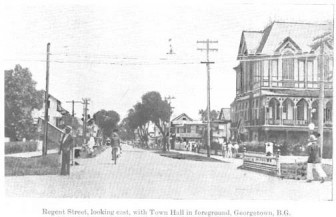
When I lived at 115 Regent Street in 1942, opposite the George Sookhoo store, I was dispatched at age 5 to fetch the midwife, from behind Thompson’s Haberdashery at Alexander Street. After the stork brought the fourth sibling, I remember the elders ‘soo-sooing,’ and my father burying something under the mango tree in the next yard, behind O R Dathorne’s home – above Ramhit’s Parlour. I learnt in later years the meaning of the cliché, “where your navel string buried.”
Ramhit was then the road maintenance foreman for the City Council, when there were very few potholes in the city’s streets. Yassin’s opened their outlet next door, after they started Lyson’s Knitwear in the Industrial Site, Ruimveldt
There were rumshops at almost every corner along Regent Street, including British Warrior, Polar Bear and Sweetheart Bar. Other popular businesses yesteryear included Kawall’s at Wellington Street and Narvo Pestano to the east next door, that became Gimpex, the PPP trading arm selling Fiat motor cars and goods from the Socialist countries in the early sixties. Federation Yard opposite, which spawned the Invaders Steelband with Dan Sandiford, Calvin Whyte, Carl Bledman and Barney Johnson, became GuyOil Service Station, as petroleum was imported after the Opec Oil Crisis in 1972, to erode the market share of Esso, Texaco and Shell. At King Street, the largest Esso sStation was built in 1969, as Esso launched their famous ‘Tiger in the Tank’ campaign.
East on that same block was Argosy Bookstore and Rajah Dry Goods, that specialized in sports and cricket gear. Mohamed Rajah, the owner, promoted Third Class Sunday cricket, which featured cricket stars such as Vibart Pariag, Saranga Baichu, the Pertabs/ Wailoo, and the Shuffler Brothers.
There was also a Frank Cup, which was the cradle of our cricket below the Case, Northcote, and Wight Cups. At college and secondary school level, there was the Jacob Cup and Chin Cup. The Bristol Cup in the late sixties, introduced limited overs for one day cricket in Guyana. I will never forget that day at the DCC Ground, as Cosmos had the homesters reeling at 40 for five in reply to 160, when a tall spectacled left hander came to the wicket. Fielding at the boundary, the cricket ball was continuously collected from the Seventh Day Adventist forecourt on Forshaw Street, and the former Fountain AME school compound on New Garden. Clive Lloyd had arrived.
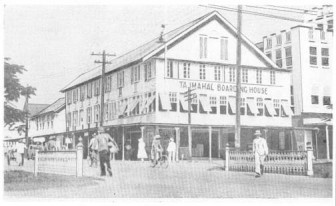
Top drug stores on Regent Street included Piggott, Lachmansingh, and Burrowes. Coppin’s Parlour with their powerful ‘cherry’ drink was opposite Alleyne’s Church and school. Betty’s gourmet black pudding, took over the mantle from the famous Jimmy’s, who at Robb Street, west of Tang’s bakery had that infamous altercation with a young Forbes Burnham. Betty moved to Norton Street, next to Lyken’s Funeral Parlour in the seventies, and is now back on Regent Road, Bourda. Next to Coppin was Sardinha’s Hardware with Yong Hing’s grocery specializing in ground coffee at Alexander Street. That site today is Torginol. At the Bourda Street end opposite the market, the Employment Exchange was established in 1944.
At New Garden Street there was the Civil Service Association. The Ministry of Agriculture opposite Bourda continues today to expand the nation’s agricultural production.
The top two nightclubs in the eighties were on Regent Street. The Cave above Fraser’s Supermarket was an elite exclusive disco with lavish décor and sound system. Its competitor, 747, was a replica of the 747 Club in Toronto, Canada, and located in the former Bamboo Gardens site, which had been destroyed by fire in 1990. This site is today the City Mall. Must mention earlier nightclubs: El Globo owned by Sydney Green, was two blocks from the Bourda swards GCC and GFC, and was a favourite watering hole after football and cricket matches. At King Street corner, opposite Acme, there was Flambeau owned by Lionel Grimes.
Peter Halder, former Ambassador, now living in Springfield, Virginia, USA, remembers Stella by Starlight Café, which opened only at nights, and was on the narrow pathway adjoining Manus’s Grand American Hotel. The main menu was a powerful cook-up for $1.00, plus pepperpot and rice. Most of the night-owl patrons bought the cook-up with a bowl of pepperpot for $1.50.
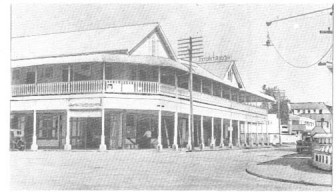
Dr Vibert Cambridge reminisces that Regent Street had different moods at different times of the day and months of the year, with the mood also shifting with one’s age. For him growing up during the fifties, Regent Street was where you got your shoes from Bata or Saraka – yachting boots also affectionately known as ‘Juta’ or ‘Bush Clarks,’ or the Achilles tendon-blistering, round-mouth shoes – CEBO from Czechoslovakia. He also noted that Regent Street encouraged a robust adult cultural mix, with enterprising entrepreneurs, musicians, prostitutes, liquor and cuisine, with Bourda Market an enriching experience unto itself.
For this cook-shop-fly, Regent Street was the playground of his pre-teen innocence – teenage steel band tramps, national sports at Bourda, adult escapades with the denizens of the city, card sharks and city characters, sinners and saints – all delightful memorable adventures in my El Dorado yesteryear.
For more Nostalgias refer to Godfrey’s Nostalgias, Golden Memories Of Guyana – 1940 to 1980 available at Austin’s Bookstore, or check out Godfrey Chin at Google or Yahoo.





